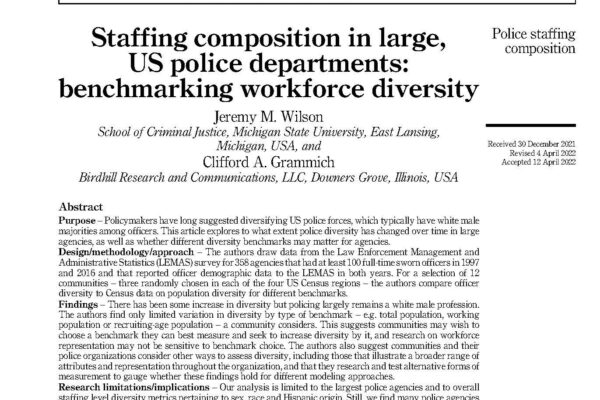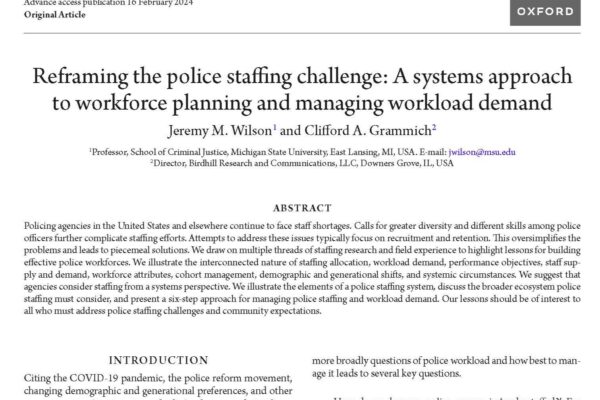Prioritizing Police Recruitment Tactics Based on Performance and Need. Michigan State University Police Staffing Observatory, PSO Perspective, Vol. 1(3), 2024.
Police agencies may employ a variety of tactics to improve their recruitment processes, with the primary goal of increasing their number of officers. Yet, as this PSO Perspective discusses, tactics perform differently within and across a variety of dimensions—some supporting other agency goals, but some not doing so. In selecting tactics, agencies should be mindful of these multiple effects, and choose those likely to produce the combination of effects they most desire. Read More






